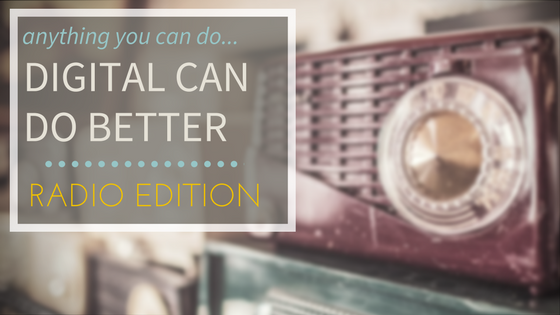What You Need to Know About Facebook’s New Audience Optimization Tool
In the past, when Facebook has rolled out new features such as updates to user news feeds, user profiles Facebook for business or the Ads manager – there's been a collective groan by millions around the world. Well, Facebook is messing with our stuff again.
They're retiring the old Interest Targeting feature for promoted posts and rolling in their shiny new Audience Optimization tool. Based on the initial review and features of this organic publishing tool, this should be met with a sigh of relief for marketers and brands that have succumbed to declining organic reach over the last few years. With this new tool, you'll be able to reach your most relevant segments of your audience and equally important, exclude audience segments – all without affecting or restricting your total audience reach or post engagement.
Need to knows: The quick hits
Facebook's plan for this feature is to allow the publisher (you) to better define your audience so that it can become more granular and specified with in your targeting. Through this more refined process, you'll be able to shift away from only using broad keywords, and instead, can focus on up to 16 target tags per post.
Facebook is giving the power back to the people (kind of). Their goal for this new Audience Optimization tool is to help you better navigate cluttered news feeds and get your content in front of the audiences that it matters to.
By using this tool, marketers will actually help Facebook to build a better mousetrap with their much maligned News Feed Algorithm, which previously didn't allow you to reach your full audience. There's still going to be an element of "pay to play" with promoted posts, but with this new feature, you will be able to maximize your organic post's reach and increase engagement.
When you target these niches within your audience, you'll also afford yourself the benefit of deeper level metrics and analytics of how your different audience subsets each react to your content. It's important to take note that these niche-groups will not be the only audience members that see your post, Facebook is just allowing you to place more of an emphasis on them and thus increase the likelihood that they will see it.
Here’s a quick snapshot of the three new features that you’ll have at your disposal when publishing posts to your Facebook pages.
- Preferred Audiences
- Audience Insights*
- Audience Restrictions
*Note: This audience insights feature is a different tool from the Facebook Ads Manager tool of the same name. Why? Because Facebook, that's why.
Facebook published the below snapshot in their initial release a week ago, where you can see the variances in click-through-rate for the defined "tagged" airline segments. The fundamental difference between this and the older targeted audiences is that you're no longer restricted to just reaching just audience members with the specific interests and no one else. Now you can target both users with that interest and allow others with like interests to see it as well – no longer exclusionary.
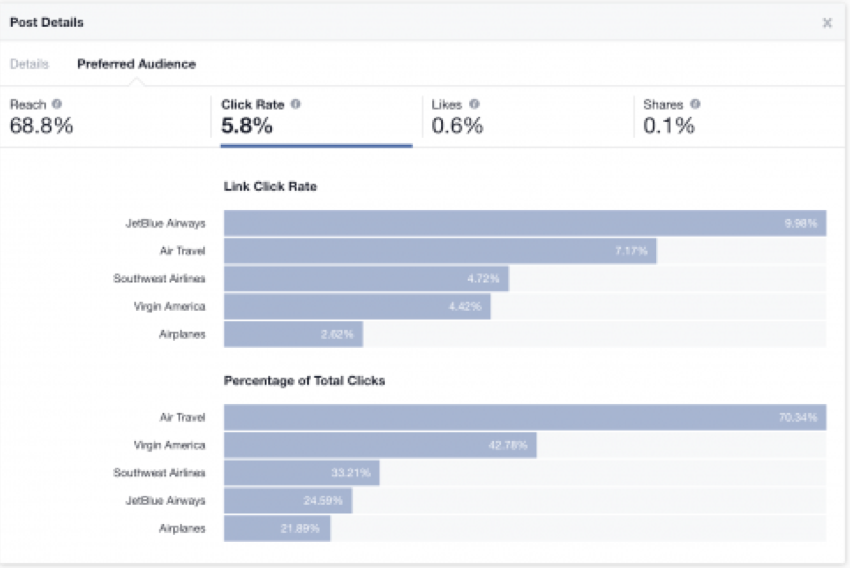
PREFERRED AUDIENCES:
Here is what the new preferred audience pop-up window will look like the first time you start the process. You can search interests by topic or browse the top-level audience categories:
- Business and Industry
- Entertainment
- Family and relationships
- Fitness and wellness
- Food and drink
- Hobbies and activities
- Shopping and fashion
- Sports and outdoors
- Technology
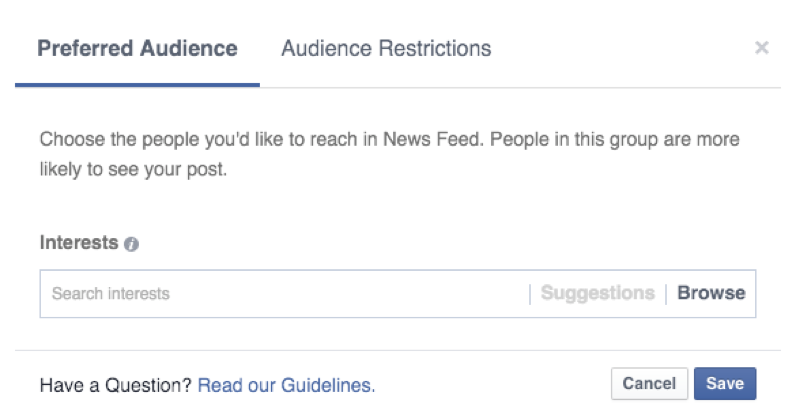
AUDIENCE RESTRICTIONS
In the same pop-up widow, you can elect to choose audience restrictions. This provides post publishers with the option to limit the post visibility across the entire channel, specify relevant/irrelevant audience types based on age, gender, location or language.
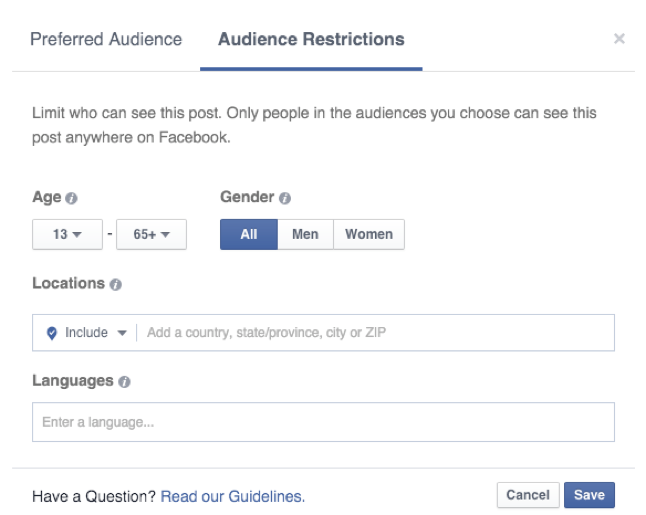
Audience Insights
This feature provides the publisher a more in-depth look into the post-performance of their content pieces – down to post level, broken out by your specified tags. Use this feature to learn what segments of your audience are and are not responding to your content types, then restrict them in the future for future posts of the same subject matter to maximize the reach and engagement through relevancy factors.

You’ve got the intel – Now here’s how to use it:
Before you begin: If your page has over 5k fans, Facebook (claims) that it should be turned on for your profile automatically. However, since we don't like to give Facebook the benefit of the doubt (have you ever tried to navigate their ridiculous FAQ section?) – here's how to turn it on manually.
- Go to your business page settings (top right corner)
- Click on the ‘General’ heading.
- Click ‘Audience Optimization for Posts’
- Click "edit" and select to turn the feature on.

That’s it. You're ready to party and publish. Now, on your profile’s post publishing window, you'll see that little crosshair icon…CLICK IT.
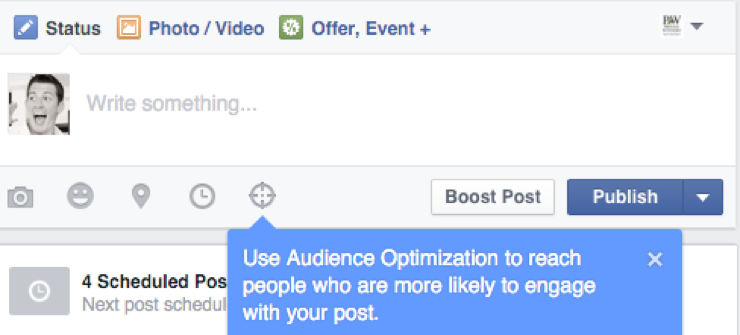
#1. Define your Audience
Using the more specified subsets of the top level interest categories – so instead of only using "cooking" drill-down to more niche areas that fit your audience type "paleo", "whole30" or "cooking with lard". Facebook with still offer up like category suggestions, so use these at your own discretion. Facebook also recommends a mix of broad and narrow terms in order to best determine what your audience is going to respond to on a given post. Think about what your audience likes, and what else they like that is tangentially related (Think: Adjacent Audiences) As an example:
- Healthy Eaters are more apt to also like content about working out.
- Sports fans are also likely to respond favorably to content about their team's city.
- Fans of a specific TV network or reality show are much more prone to liking other like reality TV shows – and other things of that nature that rot your brain).
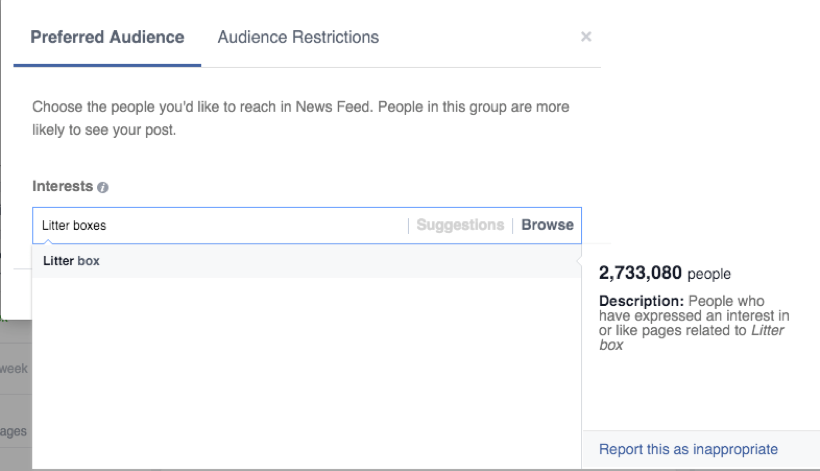
Wow, 2.7+ million people and cat litter? That's, umm…interesting.
You also have the capability to browse standard interest categories. If you used the (now defunct) Interest Tagging feature, these will look familiar.
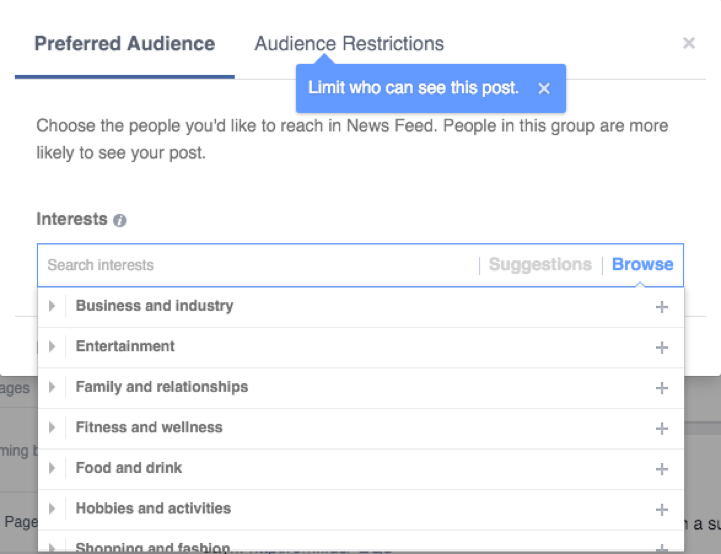
#2. Target “Like Organizations and Brands”
Facebook recommends that you use this feature to reach consumers that are already following "like brands and companies" (not unlike to Twitter's Audience Targeting feature where you can target the followers of specific profiles).
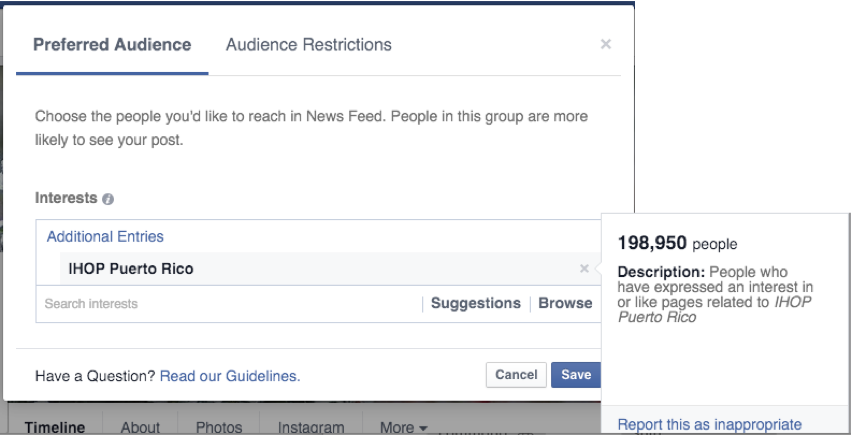
Yep, IHOP Puerto Rico. It's a thing. You've never been? OMG, YOU HAVE TO GO!
#3. Tag RELEVANT Locations
If your post is relevant to a certain geographic region or city – then it's much more likely that those Facebook users will respond favorably. Tag those townies!
#4. Search for Trending Memes and Hashtags
While Facebook once frowned upon the meme culture, they couldn’t ignore the people's need for hilarious topical nonsense any longer. With this new rollout, you can now search for popular memes and hashtags that are trending at that particular time and include them in your post.
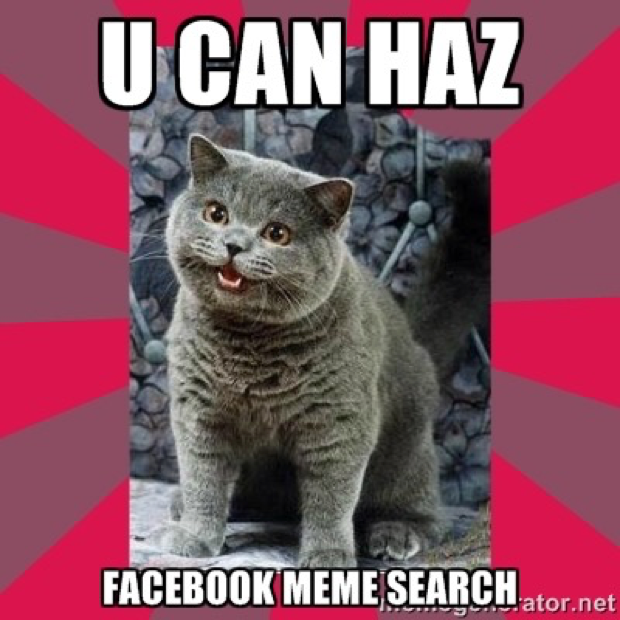
We did it, you guys!
Now that your new audience targeting is complete. All that’s left is to script some compelling post copy, include a link and/or add a wonderful visual and you're ready to publish! (You have to click on "publish" now).
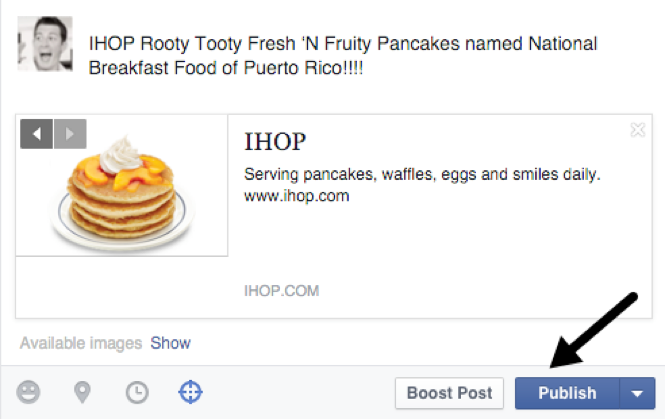
The Facebook Audience Optimization announcement is an exceptional feature improvement for marketers that will help them to find new and more efficient ways to reach their audiences, increase engagement, discover new audiences and have better, data-driven analytics on their content.
Facebook published additional ‘Tips for Tagging’ Here. Check this out so that you’re up to speed on best practices before you start getting overzealous in your tagging refinements.
Now, who wants to hit-up the IHOP?
[more]



